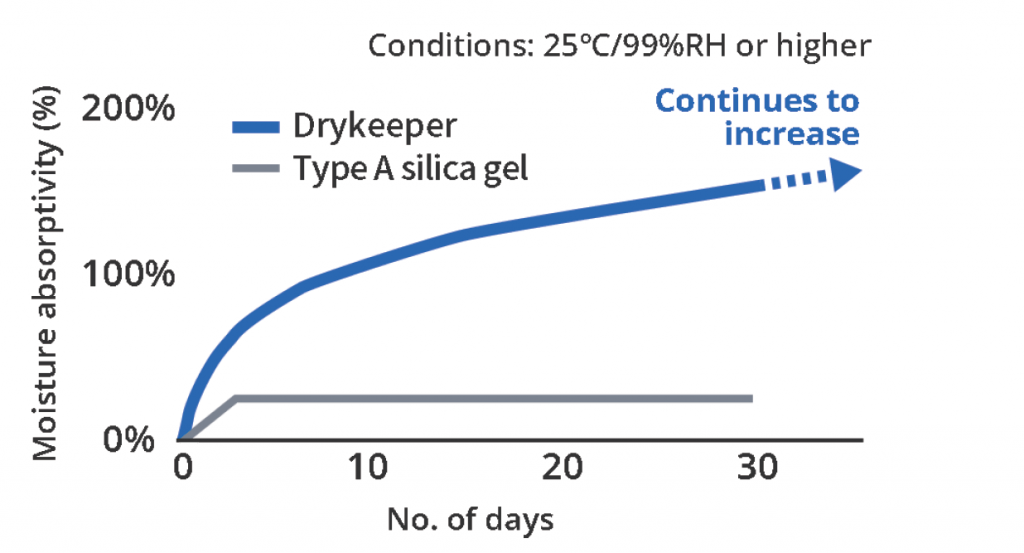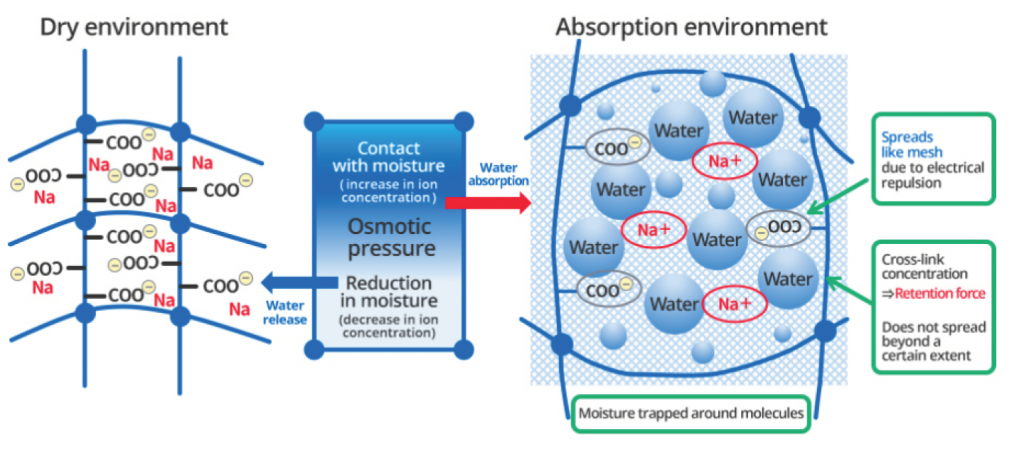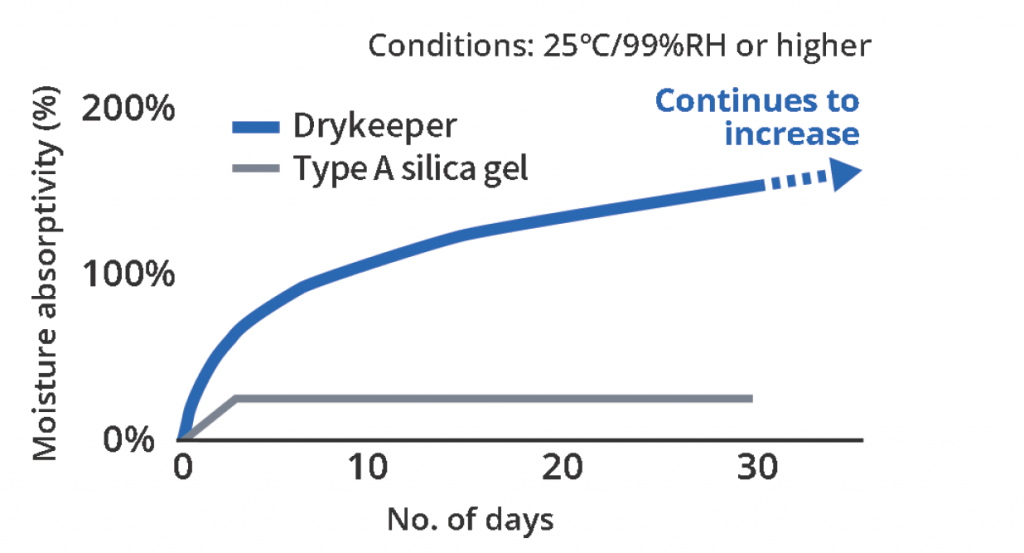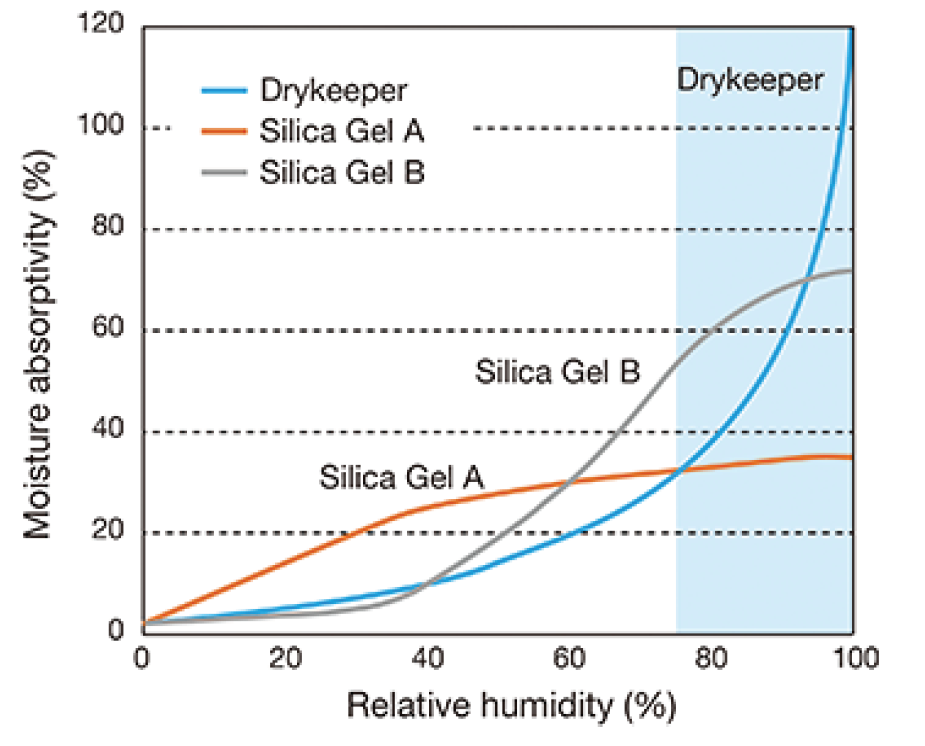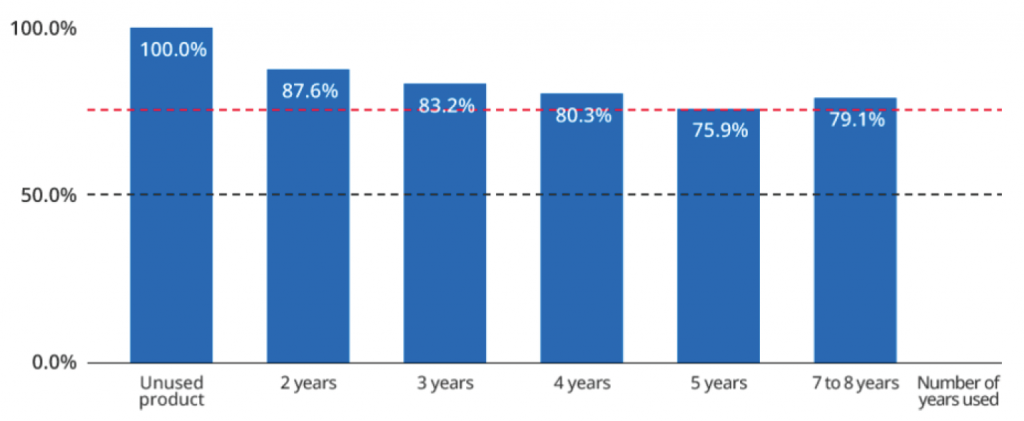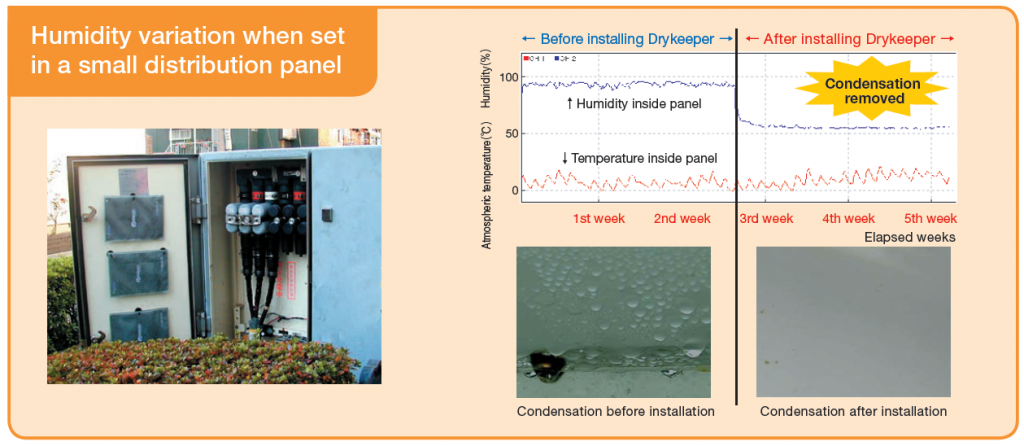Drykeeper Moisture absorbing sheet
Drykeeper is a non-halogen and environmentally friendly moisture absorbing sheet made by blendingsynthetic rubber with super absorbent polymer. Drykeeper absorbs a much larger amount of water than silica gel, which is a common desiccant. Unlike pellets and powders, Drykeeper is a thin sheet wrappedin non-woven fabric. It does not take up much space and is extremely easy to handle.
Mechanism
Hygroscopicity is determined by affinity with water, osmotic pressure, and cross-link density. When thewater-absorbing polymer in Drykeeper contacts water, water is drawn into the polymer by the action ofthe ionic groups (that are hydrophilic and easily ionized). The drawing force is the osmotic pressure.*
The water-absorbing polymer has a three-dimensional network structure and is stabilized in a gel state bythe action of rubber elasticity. When the amount of moisture in the surrounding environment decreases,the osmotic pressure expels the drawn-in water to the outside.
Note*: Osmotic pressure is the force that causes water to move from the low-density liquid to thehigh-density liquid between two liquids separated by a cell membrane.
Benefits
Can be used over a long period of time
Drykeeper continues to dehumidify over a long period of time thanks to its humidityabsorption/release function.
Water absorption capacity
Note: Products from 2 to 5 years old were tested by the maker. Products from 7 to 8 years old were collected from customers.
Excellent performance even at sub-zero temperatures
Drykeeper does not harden, even if absorbed moisture freezes in a sub-zero temperatureenvironment.
Environmentally friendly
An environmentally friendly product that does not contain environmentally hazardous substances.
Humidity variations when set in a small distribution panel
Features
Superior absorption performance
Absorbs moisture without any saturation, even in high humidity.
Comparison of Absorption Perfomance
Excellent performance even at sub-zero temperatures
Drykeeper does not harden, even if absorbed moisture freezes in a sub-zero temperatureenvironment.
Environmentally friendly
An environmentally friendly product that does not contain environmentally hazardous substances.
Humidity variations when set in a small distribution panel
Can be used over a long period of time
Drykeeper continues to dehumidify over a long period of time thanks to its humidityabsorption/release function.
Water absorption capacity
Frequently Asked Questions
Is Drykeeper in compliance with environmental regulations?
Drykeeper is compliant with theREACH Regulation and RoHS Directive. Since it is not an electronic device, Drykeeper is notsubject to the WEEE Directive. If you need any certificates of non-use, please issue a request to our technical staff or use the inquiry form.
Are there any precautions when disposing of Drykeeper?
Unlike environmentally hazardousinorganic substances such as silica gel (treated as industrial waste), Drykeeper can be treated inthe same way as general waste.
What if I want to use Drykeeper in a size other than the standard sizes?
Depending on thequantity, FEPS may be able to provide a custom size. Please contact FEPS (minimum approx. 35m² for an order).
Furthermore, cutting and punching does not affect the moisture absorption and desorptionperformance of Drykeeper. Therefore, customers may cut/punch the purchased Drykeeper to suittheir needs. However, FEPS provides no guarantees in the event of any issues/failures arising fromcutting or punching performed by customers.
(Note)
The blue non-woven fabric that contains Drykeeper has a water repellent effect. Thisprevents the body of Drykeeper from expanding due to direct contact with water in theunlikely event that condensation occurs. Please use caution when handling Drykeeperwithout the non-woven fabric after cutting.
What is the supported temperature range?
The supported temperature range is about -30 to90°C. Operation will not stop due to freezing even at below freezing point. However, therecommended temperature for the double-sided tape used in the Drykeeper mini is -15 to 80°C. Ifyou plan to use it outside that temperature range, we recommend that you conduct a test to confirmperformance.
What are some usage examples of Drykeeper?
Drykeeper is used in infrastructure equipment,building equipment, electronic equipment, etc., of power companies, expressway companies, andrailway companies.
Roads: ETC devices, display boards, parking lot payment machines
Railways: Railroad crossing gate, display board
Airports: Runway guidance lights
Electronics: Surveillance cameras, servo motors
Does Drykeeper have a track record of outdoor use?
All Drykeeper products have a trackrecord of outdoor use.
Has Drykeeper acquired flame retardant certifications?
Regular Drykeeper products have notacquired flame retardant certifications. The flame-retardant type, Drykeeper FR, has acquiredgrade V-0 grade under the UL 94 standards.
Is it possible that mold will grow if Drykeeper remains damp after absorbing moisture?
FEPS tested Drykeeper in an environment of normal temperature and high humidity for over onemonth. We did not observe any mold during the test.
